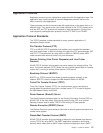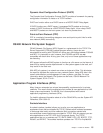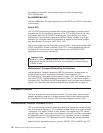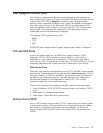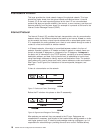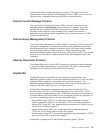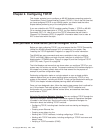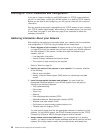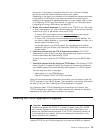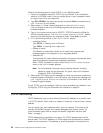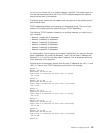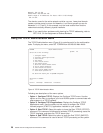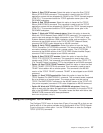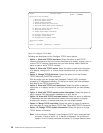
Chapter 2. Configuring TCP/IP
This chapter explains how to configure an AS/400 business computing system for
Transmission Control Protocol/Internet Protocol (TCP/IP). If this is the first time that
you have configured TCP/IP on an AS/400 system, you should read the entire
chapter before performing any of the configuration tasks.
If you are unfamiliar with TCP/IP, consider reading Chapter 1. TCP/IP on AS/400.
For a complete formal description of TCP/IP, you can read the Request for
Comments (RFC). Or, refer to any of the TCP/IP references that are listed in
“Request For Comments (RFC)” on page 602. Information about how to order an
RFC is also listed within that topic.
What you need to know before you can configure TCP/IP
Before you start configuring TCP/IP, you must ensure that the
TCP/IP Connectivity
Utilities for AS/400
licensed program (LP) is installed on your system. See
“Installing the TCP/IP Application Programs” on page 23 for more information.
The AS/400 has many commands and menus available to help you configure
TCP/IP on AS/400. Before you begin this task, take time to review the TCP/IP
Administration (TCPADM) menu, Figure 9 on page 26, and the Configure TCP/IP
(CGFTCP) menu, Figure 10 on page 28.
The initial displays and menus that are shown when you configure TCP/IP on your
system may not contain any entries. The sample command line interface displays in
this chapter may already contain data, which was entered for the purpose of
example in previous configuration steps.
Performing configuration tasks on a single network or even a simple multiple
network requires that you do some planning before configuring TCP/IP on any
system in that network, including an AS/400. To help you get started with setting up
TCP/IP, this chapter includes complete planning details and checklists.
Once you have designed a plan, follow the step-by-step process that is outlined for
you in this chapter. Each step guides you through TCP/IP installation and
configuration on your system, defines various terms, and describes how these
terms relate to TCP/IP.
Using the Operations Navigator interface: You can configure TCP/IP through the
Operations Navigator interface wizard. Information related to Operations Navigator
is located in the online help. See the online help in Operations Navigator for
information about the following TCP/IP functions:
v Configuring TCP/IP, including basic functions such as starting and stopping
TCP/IP
v Creating a new Ethernet line
v Creating a new token-ring line
v Working with TCP/IP interfaces, including configuring a TCP/IP route
v Working with TCP/IP host tables, including configuring a TCP/IP host name and
domain name
v Verifying a TCP/IP connection (PING)
© Copyright IBM Corp. 1997, 1999 21



